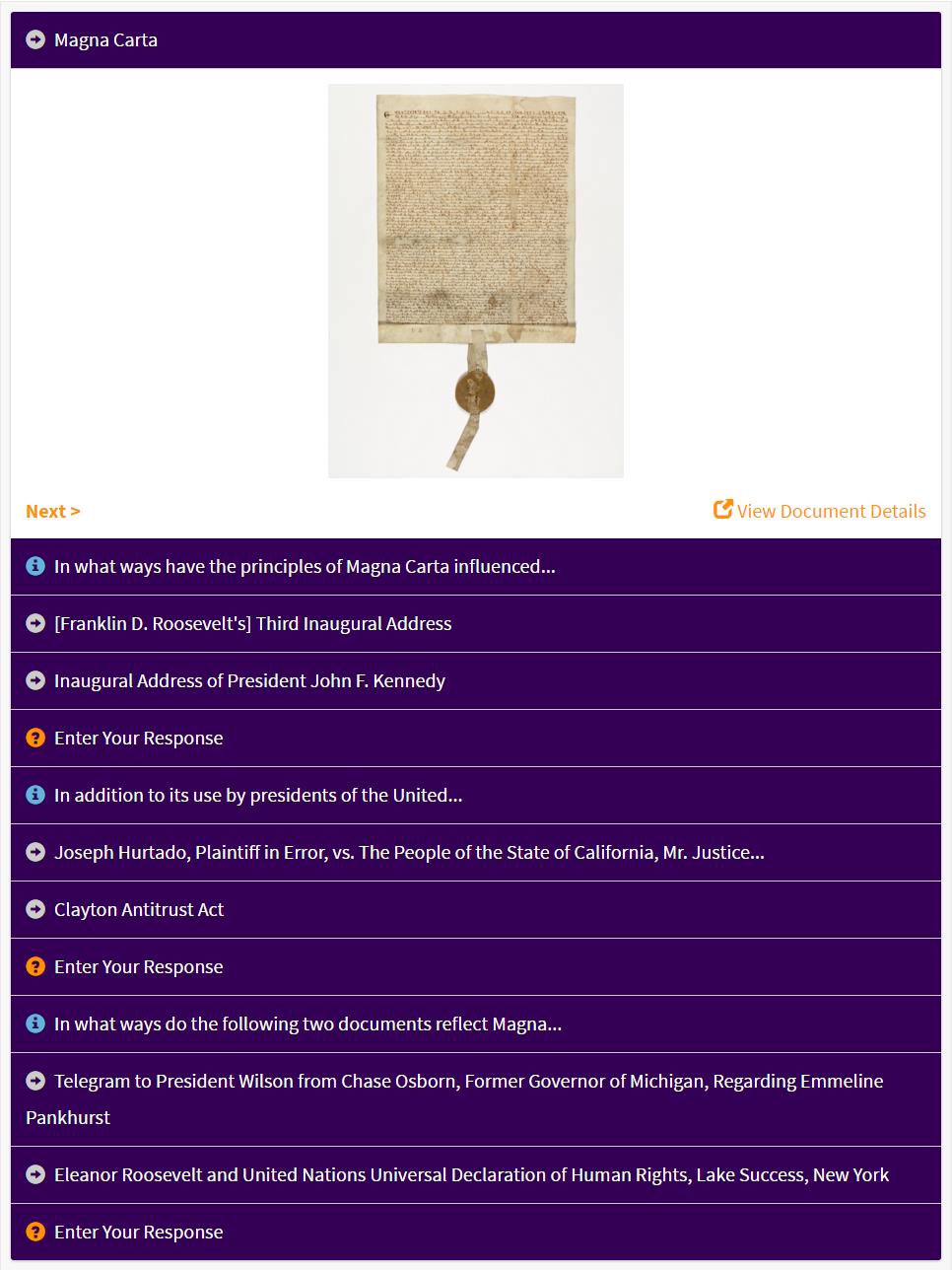This activity invites students to examine the influence of Magna Carta throughout American history, as demonstrated through a selection of key documents. Students will analyze and answer questions about various primary sources that connect with the ideals and principles of Magna Carta.
Suggested Teaching Instructions
Use this activity when teaching the Constitution, Declaration of Independence, or colonial U.S. History. It can help students understand why a document written in England over 800 years ago could have a lasting effect on American government. For grades 10-12. Approximate time needed is 30 minutes. This activity can be done in class in small groups, or individually outside of class.
To provide students with appropriate historical context and background, see the
description and
translation on our main National Archives website. (One of four surviving originals of the 1297 Magna Carta is
on permanent display at the National Archives.) For a more extensive introduction to Magna Carta and its history, follow the link to an excellent introduction provided by the
British Library. Providing context for students is vital in order to complete this activity:
Magna Carta was created as a result of a meeting of frustrated barons who sought political redress and cooperation from the difficult King John of England. In 1215, after much debate, it was signed and sealed. Though this peace treaty failed to prevent civil war in England, the rights laid out in Magna Carta remain the cornerstone of British Law as well as the U.S. Declaration of Independence and Constitution.
To begin, provide students with the appropriate context and invite them to read the
translation. When they begin the activity, students will see some key documents in our Nation’s history and be asked to answer questions showing the relationship between these documents and Magna Carta. They should write their answers in the blank text boxes included in the activity. Some of the questions are:
- In what ways have the principles of Magna Carta influenced the rhetoric of U.S. Presidents?
- Compare and contrast the ways Magna Carta has been used in each of the three branches of government.
- Which rights and protections included in the Declaration of Independence and the Constitution reflect Magna Carta?
Answers to these questions can be found in the documents provided, most of which expressly mention Magna Carta, or else explicitly describe principles from it. For example, for the first question, students may suggest that both FDR and JFK were influenced by Magna Carta as shown in their inaugural addresses. FDR explicitly mentions Magna Carta and the lengthy battle of humanity for democratic ideals as evidenced by Magna Carta. JFK never mentions Magna Carta explicitly, but his statement regarding the commitment of the United States to the cause of liberty and freedom for all reflects its principals.
When students have finished providing answers in the text boxes, they should click "When You're Done." They will be asked to describe how the documents they have seen show the influence of Magna Carta, giving specific examples from the texts. Follow up with a class discussion about the overall impact of Magna Carta on American history.





